Orange fruits are a colorful category of fruits that have either orange skin or flesh, sometimes both. These fruits are appealing to the eye for their vibrant color.
Orange fruits often have a sweet to tangy flavor profile, making them popular for consumption both raw and in various culinary dishes. They can be enjoyed in salads, smoothies, desserts, or simply on their own as a refreshing snack.
The vibrant color of these fruits is due to the presence of carotenoids, natural pigments that play a significant role in plant health and human nutrition.
After getting to know the fruit options, vegetables should be your next priority to find out which veggies also support an orange color.
21 Popular Orange Fruits with Filters
Let’s venture into the 21 orange fruits that you need to know. Make use of the filter to view these fruits if they’re often used in dishes, beverages, or garnish.
Find out some fruity options that are seen as national, exotic or even utilized as fruit vegetables.
Orange
- For Beverages
- For Dishes
- For Garnish
Orange is a popular fruit, enjoyed worldwide for its sweet, tangy flavor and bright color. Originating from a hybrid of pomelo and mandarin, sweet oranges like the Navel and the bitter Seville variety are common.
They’re commonly used in cooking for raw consumption or for cooking dishes that require a touch of fragrance.
Mango
- Haiti
- India
- Pakistan
- Philippines
- For Beverages
- For Dishes
- National
Mango is a tropical fruit available in many countries around the world. Found in various colors, including yellow, green, pink, crimson, and sometimes orange, each variety has its distinct hue with small dots on its skin.
Mango season peaks from May to September. These fruits usually have an oblong shape, while their orange-yellow flesh is juicy and sweet.
People tend to use mangoes to enhance the flavors of dishes, and they can be enjoyed sliced in salads, with ice cream, or in drinks.
Peach
- For Beverages
- For Dishes
Peach is a sweet and juicy fruit with a soft, fuzzy exterior and a hard pit in the center. Originating from China, it’s now grown in temperate regions worldwide.
These semi-soft fruits are enjoyed fresh, canned, or used in various culinary dishes. They come in different varieties, including yellow, orange, and white flesh, each with its unique taste profile.
Tangerine
- For Beverages
- For Dishes
- For Garnish
Tangerine is a small, sweet citrus fruit, a hybrid of mandarin oranges and pomelos, with thin peelable skin. Cultivated mainly in sunny climates, they are harvested from autumn to spring.
These fruits are popularly used as desserts, snacks, juices, and salad ingredients. Often, tangerines are sweeter and less tart than sweet oranges, with even their bitter skin used for flavoring drinks, cakes, and sauces.
Mandarin
- For Beverages
- For Dishes
- For Garnish
Mandarin is one of the ancestral citrus fruits with a round to spherical shape. Originating from Southeast Asia and southwest China, mandarins were cultivated by the Chinese thousands of years before being introduced to Europe.
The fruit’s interior naturally divides into 9 to 15 segments filled with sweet and sour juice. Known for their juiciness and sweetness, mandarins are a popular dessert in many Asian countries.
Grapefruit
- For Beverages
- For Dishes
Grapefruit is a subtropical citrus fruit, believed to be a hybrid between sweet orange and pomelo. Surprisingly, it is among the largest fruits in the citrus family.
Harvested annually between October and May, its juicy, reddish flesh varies from sweet to bitter, with darker varieties tending to be sweeter. Commonly enjoyed as a dessert or snack, grapefruit can be cut into pieces as preferred.
Pumpkin
- For Dishes
- Fruit Vegetables
Pumpkin is likely the largest orange fruit, first emerging in North America in about 9,000 years. Its hard exterior ranges from light to bright orange when it ripes, while its yellow flesh houses large seeds.
Pumpkins are often used as a vegetable in desserts, soups, and salads. When cooked, the flesh offers a soft and tender texture similar along with a mild sweetness.
Harvested in autumn, pumpkins are a traditional part of Thanksgiving meals in North America and a popular Halloween decoration globally.
Apricot
- For Beverages
- For Dishes
Apricot is a small of Chinese origin with a sweet, slightly tart flesh and pleasant aroma. Its skin comes with a soft, fur-like texture, and showcases a range of colors from yellow and orange to crimson.
Usually, the fruit possesses a large, inedible seed. Often consumed raw, apricots are enjoyed as juices, salads, ice creams, cakes, desserts, jams, and chutneys.
Persimmon
- Japan
- For Dishes
- National
Persimmon is a round, flat-shaped fruit with glossy skin, topped with a large green stem. These fruits are notably sweet and quite tender when ripe.
Varieties like Oriental, American, and velvet persimmon are well-known and available from October to January. These fruits are delicious, whether eaten raw or blended into juice.
Blood Orange
- For Beverages
- For Dishes
- For Garnish
Blood orange is a variety known for its unique crimson flesh, a result of anthocyanins, rare pigments in citrus fruits. Grown in warm and temperate regions, it matures in winter and early spring.
Blood oranges come in three types, including Moro, Tarocco, and Sanguinello.
Generally, their flavor combines sweet orange, raspberries, tart cherries, and grapefruit.
Blood oranges are great for enhancing cakes, desserts, meats, and salads with their delightful color.
Kumquat
- For Dishes
- For Garnish
Kumquat is an egg-shaped fruit with edible skin and flesh, offering a unique mix of tart and sweet profiles. Native to China, kumquats are also found in California and Florida, USA, with their trees fruiting from January to March.
The fruit also has many varieties, like Meiwa, Jiangsu, and Nagami, which offer slight differences in shape and taste.
Small kumquats make for great snacks or desserts, fitting well into a daily diet.
Butternut Squash
- For Dishes
- Fruit Vegetables
Butternut squash is a fruit boasting a nutty, slightly sweet flavor similar to pumpkin. When perfect for harvesting, its skin turns from dark green to dark orange.
As for the flesh, it includes a yellow to light orange flesh filled with edible seeds. Interestingly, the squash is recognizable for its long, bulbous shape.
Often used as a vegetable, the squash can be roasted, toasted, mashed, or boiled.
Kinnow
- For Beverages
Kinnow is a citrus fruit that looks similar to an orange but can be distinguished by its sour and succulent profile. The citrus also has a darker and thicker skin.
Originating from India and Pakistan, kinnow is a high-yielding tree, often bearing more than 1,000 fruits. These citrus are often enjoyed fresh for their juiciness.
Seville Orange
- For Beverages
- For Dishes
Seville orange is a sour and bitter orange species. Coming from Asia and introduced to Sevilla in the 1100s, it has thick, rough skin and ranges from small to medium size.
Widely cultivated in Spain and harvested in winter, it can be frozen for later use. Seville orange juice is incorporated in syrups, cocktails, and sauces to flavor fish dishes in Spain.
Additionally, essential oil and marmalade made from this orange are highly valued.
Calamansi
- For Beverages
- For Garnish
Calamansi is a hybrid citrus fruit, stemming from kumquat and possibly mandarin. Native to Southeast Asia and Taiwan, its skin ranges from green when young to orange as it ripens.
Calamansi is a staple in various local dishes. It offers a unique sour and sweet taste, ideal for both food seasoning and making refreshing juice.
Red Kuri Squash
- For Dishes
- Fruit Vegetables
Red kuri squash is a fruit with a distinct structure, featuring a smooth, dark orange skin speckled with yellow. Native to Japan, it’s known as “Japanese squash” or “orange Hokkaido squash”.
Under the vibrant skin, it has a sweet, rich orange flesh with a nutty flavor. Cooking methods such as roasting, baking, and boiling are great for handling this squash, especially in making soups, casseroles, and stews.
Orange Cherry Tomato
- For Dishes
- For Garnish
- Fruit Vegetables
Orange cherry tomato is technically a fruit, as it grows from flowers and contains seeds. This tomato variety is smaller and sweeter than larger varieties, flourishing in summer and fall.
They add a colorful touch to dishes along with a signature sweet profile. Ideal for fresh eating, orange cherry tomatoes are also great for adding to soups and making delicious toppings for crostini.
Orange Bell Pepper
- For Dishes
- For Garnish
- Fruit Vegetables
Orange bell pepper is often used as a vegetable, offering a crisp and tangy taste that’s sweeter than its green counterpart. The fruit offers a smooth, edible exterior and sectioned interior.
It’s versatile in cooking, great for roasting with olive oil and garlic or adding fresh to soups.
Marian Plum
- Exotic
- For Dishes
Marian plums are egg-shaped fruits with orange-yellow peels and originally grew in Indonesia and Burma. Nowadays, people in Thailand and some Southeast Asian countries cultivate it for economic purposes.
People categorize plums into sour and sweet kinds, with sweet ones being their favorite on the market. Additionally, mayong is a special type of marian plum that belongs to Thailand, offering a sweet taste paired with a slight sourness.
You can treat these small fruits as snacks or toppings for salads and ice cream.
Golden Berry
- Exotic
- For Beverages
- For Dishes
Golden berry is a small, vibrant orange fruit encased in a papery husk. It originated in South America but thrives in both temperate and tropical climates.
The fruit is juicy, with a sweet and tart flavor, making it ideal for snacks, salads, smoothies, and as an accompaniment to fish and meat dishes.
Tangelo
- For Beverages
- For Garnish
Tangelo is a citrus fruit hybrid derived from the tangerine and either the pomelo or grapefruit. The produce stands out for its distinct pear-shaped appearance and a characteristic nipple at the stem.
The skin of a tangelo is thin, smooth, and easy to peel, accompanied by juicy, sweet, and mildly tart flesh inside. Often larger than a tangerine but smaller than a grapefruit, tangelos are known for their vibrant orange color and fewer seeds.
What Vegetables Have An Orange Color?
When it comes to the veggie world, there are many options that come with an attractive orange color. These are some of the popular options to learn about:
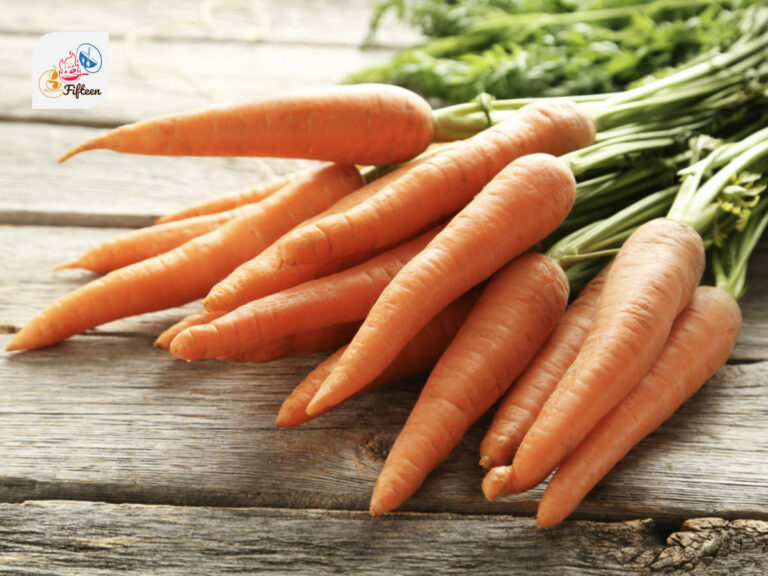
Carrot
Carrot is a root vegetable known for its vibrant orange color and crunchy texture. It is high in beta-carotene, which the body converts into vitamin A.
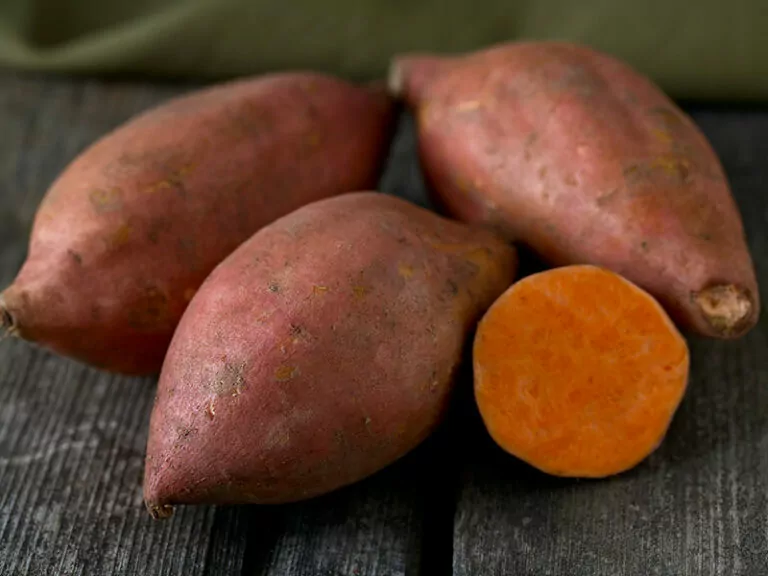
Sweet Potato
Sweet potato is a starchy, sweet-tasting root vegetable with a bright orange flesh. It’s rich in fiber, vitamins, and minerals, making it a healthy addition to any diet.
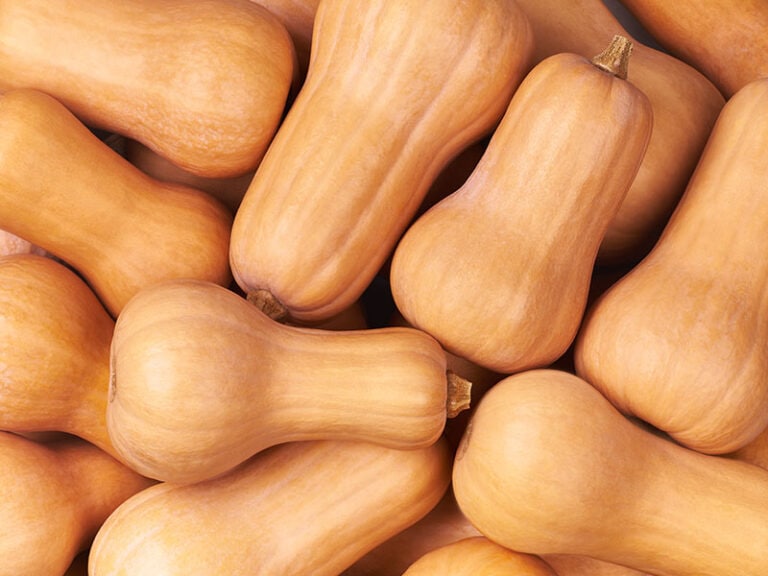
Butternut Squash
Butternut squash is a type of winter squash with a sweet, nutty taste and an orange flesh. It can be roasted, mashed, or used in soups and stews.
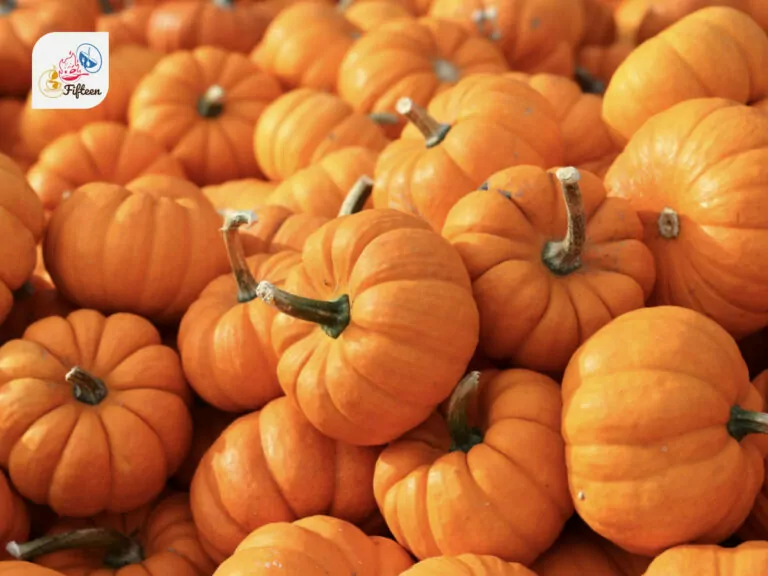
Pumpkin
Pumpkins are a type of winter squash with a thick, orange shell that contains seeds and pulp. They are popular in fall dishes, especially in pies, and as Halloween decorations.
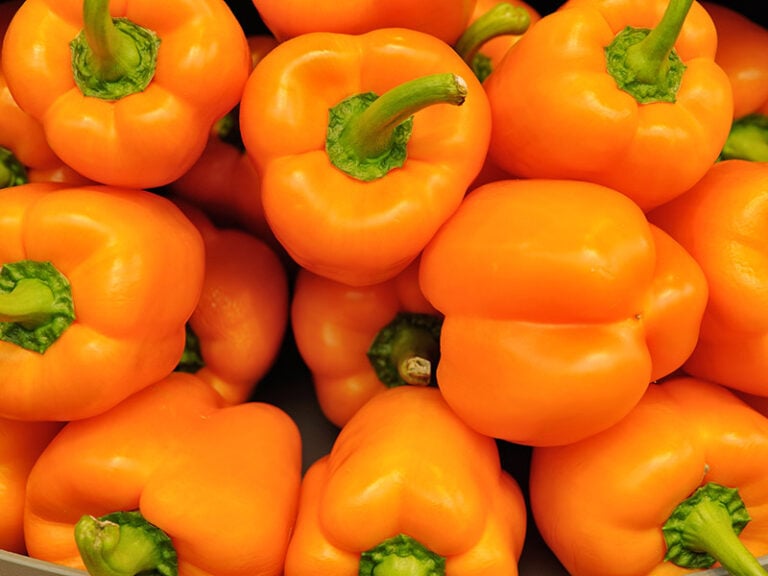
Orange Bell Pepper
Orange bell pepper is a variety of bell pepper that is orange in color and has a sweet flavor. It’s rich in vitamins A and C and can be eaten raw or cooked.
What do you think about these vibrant orange greens (+ orange vegetables)? With vegetables, they offer a nutritional source for your diet.
Don’t forget to leave a comment sharing your thoughts after going through all the fruits that possess a bright orange color. Then, you should share these fruits with others around you so they can learn that, aside from oranges, more produce bears such a vibrant hue.


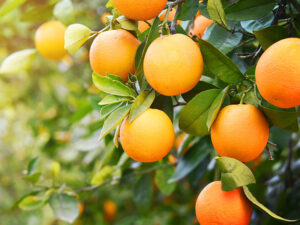
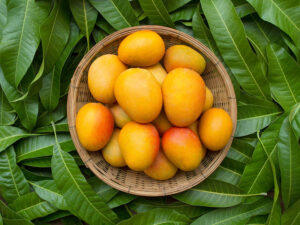

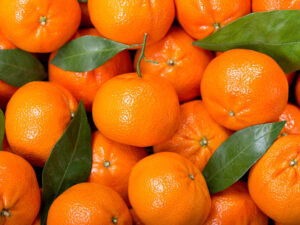
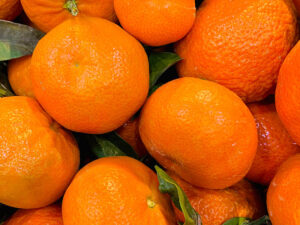



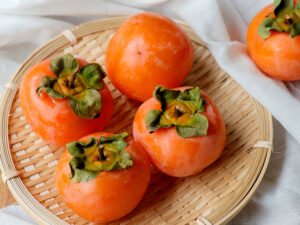
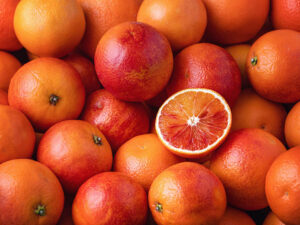
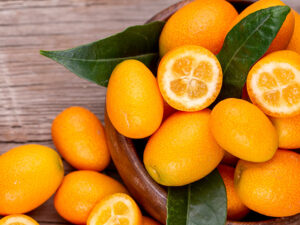

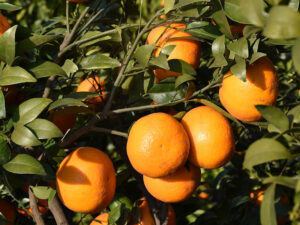
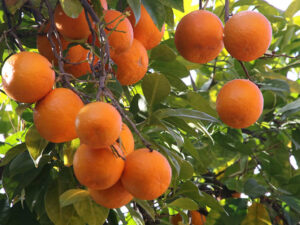
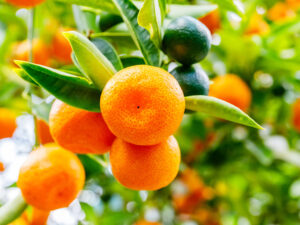
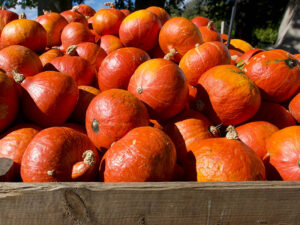
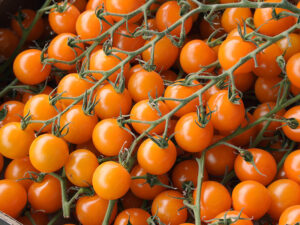
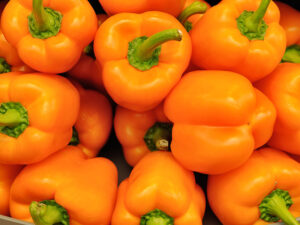
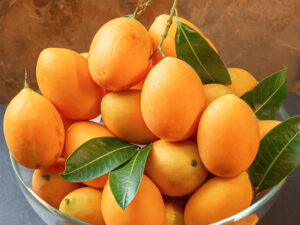
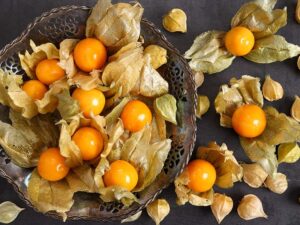

Jamie Scott
Editor in Chief, Senior Content Writer
Expertise
Home Cooking, Meal Planning, Recipe Development, Baking and Pastry, Food Editor, Cooking-video Maker, Western Food Evaluation Expert
Education
Le Cordon Bleu College of Culinary Arts
Local Community College, New York, NY
Jamie Scott is a skilled culinary expert and content creator specializing in Western cuisine. With over 15 years in the culinary field and formal training from Le Cordon Bleu, Paris, Jamie deeply understands how to blend nutrition with delicious flavors. His passion for cooking matches his commitment to making healthy eating accessible and enjoyable.
On Fifteen.net, Jamie brings a fresh perspective to classic dishes and beverages, offering readers insightful recipes, cooking tips, and a fresh view on meal planning that emphasizes taste, health, and simplicity.